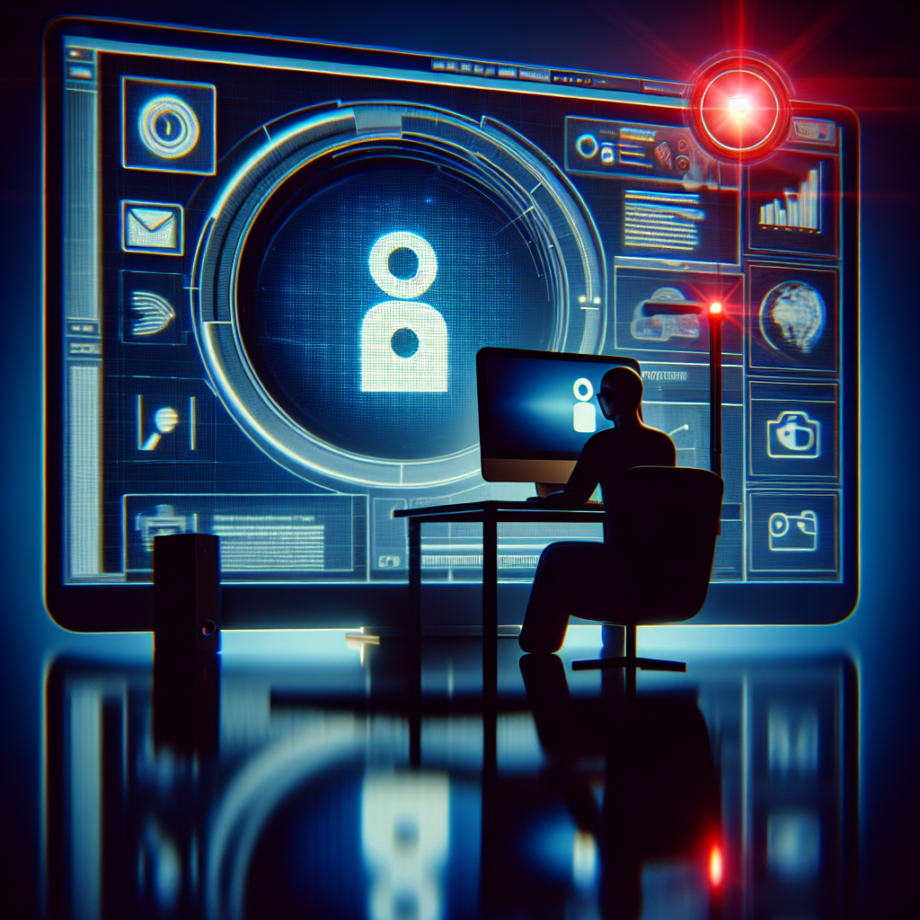
In the age of digital communication and remote work, webcams have become an essential part of our daily lives. However, with increased usage comes the risk of unauthorized access. Discovering if your webcam is being accessed without your permission is crucial for protecting your privacy and maintaining security.
Signs That Your Webcam May Be Compromised
Identifying unauthorized webcam access can be challenging, but certain signs may indicate a security breach.
| Sign | Description |
|---|---|
| Indicator Light | The webcam’s indicator light turns on without your action or active applications. |
| Background Noise | Unusual sounds or voices during inactive webcam sessions. |
| Performance Issues | Unexpected slowdowns or high CPU usage on your device. |
| App Notifications | Unfamiliar applications requesting webcam access or sending alerts. |
Monitor Indicator Lights
A common sign of unauthorized webcam access is the activation of the webcam indicator light. While this light typically turns on when using webcam applications, unexpected activation could suggest unapproved access. Pay close attention to the light, especially when not engaged in video calls or taking photos.
Check Active Applications
Uncovering which applications are using your webcam can help determine if it’s being accessed without permission. Perform the following steps to check active applications on both Windows and macOS systems:
- Windows: Open Task Manager by pressing Ctrl + Shift + Esc. Navigate to the Processes tab, and look for applications utilizing the webcam.
- macOS: Access Activity Monitor by pressing Command + Space, typing Activity Monitor, and pressing Return. Check for unfamiliar processes that may be using the webcam.
Using Software Tools and Security Features
Leveraging software tools and built-in security features can provide additional layers of protection against unauthorized webcam access.
Antivirus and Anti-Malware Software
Antivirus and anti-malware programs are essential for detecting and removing malicious software that could enable unauthorized webcam access. Ensure your security software is up-to-date and perform regular system scans.
Webcam Security Applications
Several applications are designed specifically to monitor and protect webcam access. Consider using the following tools:
- OverSight: A macOS application that alerts users when the webcam or microphone is activated.
- Windows Defender: Built-in Windows protection that can be configured to monitor webcam access.
- Webcam Blockers: Physical covers that can be placed over your webcam when not in use.
Configuring System and Browser Settings
Adjusting your system and browser settings can help prevent unauthorized webcam access and enhance overall privacy.
System Privacy Settings
Follow these steps to configure your privacy settings:
- Windows: Go to Settings > Privacy > Camera. Toggle off access for apps that don’t need webcam functionality.
- macOS: Navigate to System Preferences > Security & Privacy > Camera. Deselect applications that shouldn’t have access to your webcam.
Browser Settings
Web browsers may request webcam access for various applications. Controlling access permissions in different browsers is essential:
- Google Chrome: Open Settings > Privacy and Security > Site Settings > Camera. Adjust settings for specific sites as needed.
- Mozilla Firefox: Go to Preferences > Privacy & Security > Camera. Manage permissions for different websites.
- Microsoft Edge: Access Settings > Site Permissions > Camera. Modify permissions based on site requirements.
Implementing Physical Security Measures
Beyond software and settings, physical security measures can offer additional layers of protection.
Use Webcam Covers
Webcam covers are simple, inexpensive devices that physically block your camera lens when not in use. These covers can prevent unauthorized visual access, providing peace of mind.
Disable Webcam When Not Needed
If you rarely use your webcam, consider disabling it through your device’s hardware settings. This precaution can eliminate the risk of unauthorized access.
Wrapping Up
In conclusion, identifying if your webcam is being accessed without your permission involves monitoring indicators, using security software, adjusting settings, and adopting physical security measures. By taking these steps, you can safeguard your privacy and ensure that your webcam is used only when intended.
